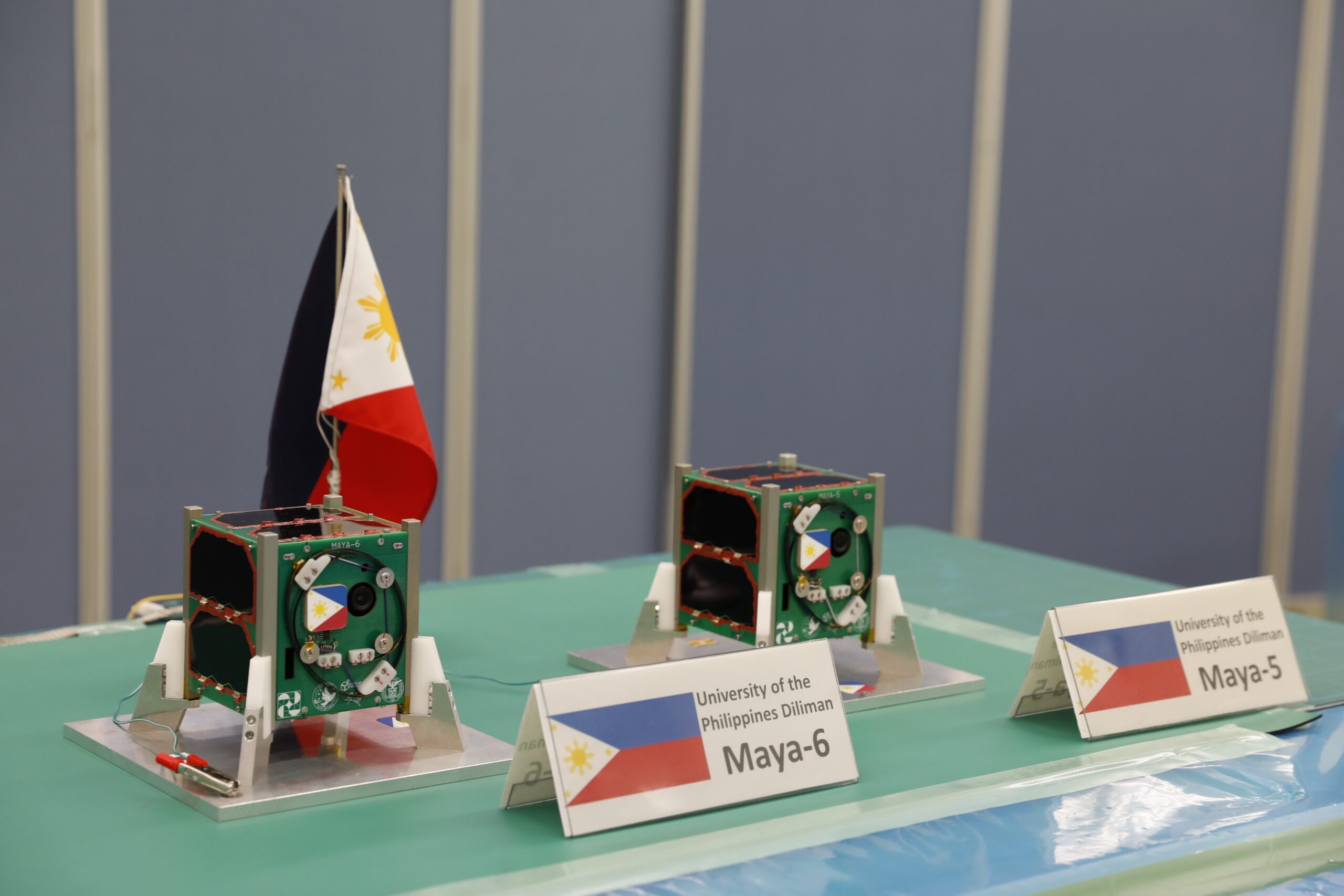SUMMARY
This is AI generated summarization, which may have errors. For context, always refer to the full article.

MANILA, Philippines – The second batch of cube satellites (CubeSats), Maya-5 and Maya-6, created by Filipino science scholars, were launched into space from the International Space Station (ISS) at 3 pm, on Thursday, July 19 (Philippine time).
Maya-5 and Maya-6 were released into the cosmos as part of the “Kibo” or Japanese Experiment Module Small Satellite Orbital Deployer-26 CubeSat deployment mission. The CubeSats were launched to the ISS last June aboard the SpaceX Dragon Falcon 9.

CubeSats are miniature satellites almost twice the size of a Rubik’s cube. Because of their small size, CubeSats can “hitchhike” in other rocket launches.
These diminutive satellites serve as educational tools to help graduate students, scholars learn more about spacecraft design and technology.
The scholars under the Space Science and Technology Proliferation through University Partnerships (STeP-UP) Project that created the Maya-5 and Maya-6 are hopeful that the satellites will “shine light on scientific questions and can be analyzed for future satellite developments in the Philippines.”

Top, left to right: Genesis Remocaldo, Chandler Timm Doloriel, and Gio Asher Tagabi Bottom, left to right: Khazmir Camille Valerie Macaraeg, Anna Ruth Alvarez, Ronald Collamar, Joseph Jonathan Co, and Angela Clarisse Chua
The first 72 hours is crucial as the team will monitor the health of satellites once in orbit, especially the status of their antenna deployment and battery levels.
Named after the famous Philippine bird, Maya-5 and Maya-6 come five years after the first CubeSat, Maya-1, was launched last August 2018.
Besides testing the country’s capability in satellite development, the project aims to serve the amateur radio community.
On the same day of the launching, the amateur radio satellite station at the University of the Philippines-Diliman received its first beacon from Maya-5 and Maya-6.
Flight heritage
Currently, Maya-7, a two-unit cube satellite, is in the works within the Philippine Space Agency (PhilSA). This is the first time that PhilSA will take the program of the cube satellite under its wings.
As the cube satellites evolve, lessons and techniques are transferred from one batch to the next, Nathan Rosimo, mentor for thermal and radiation subsystem in PhilSA, told Rappler.
“For example, in designing thermal control system, we refer a lot back to the previous design because they’re already ‘flight-proven.’ And then we can focus on creating new and other aspects of the CubeSat,” Rosimo said in a mix of Filipino and English.
Last year, the PhilSA called for proposals for mission ideas for the Maya-7. PhilSA was established last 2019 through Republic Act No. 11363 and is the government agency responsible for space science and technology applications. – Rappler.com
Add a comment
How does this make you feel?




There are no comments yet. Add your comment to start the conversation.